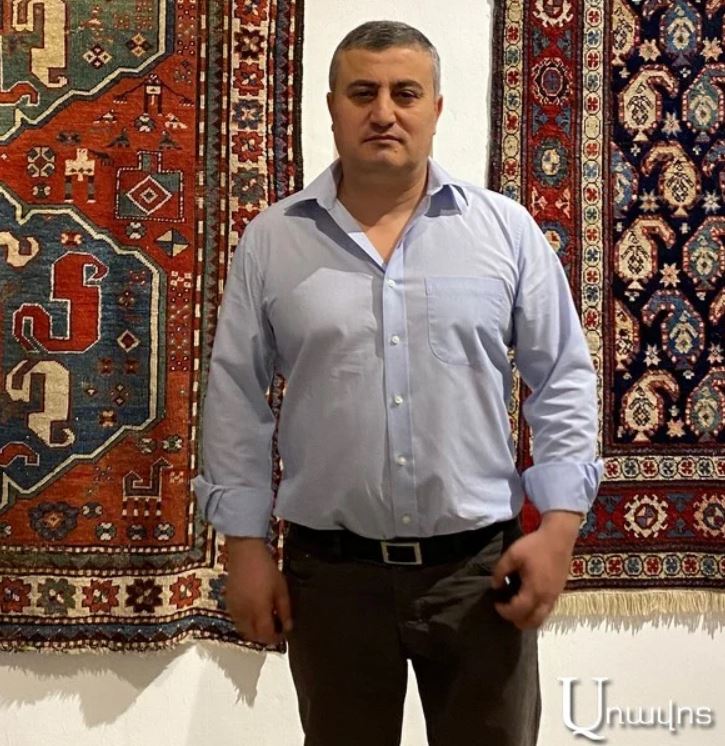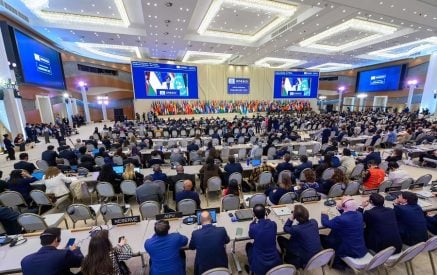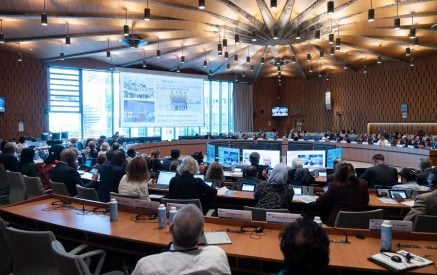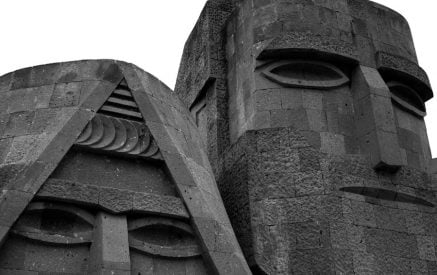“This museum was founded in 2011. In Shushi, the preconditions have existed for a long time, as our neighboring country has set a task at the state level to assimilate that culture through academic work and opening museums. They have been buying Artsakh carpets from the people since Soviet times, and since 1994, carpet sellers have been buying these carpets aggressively from the people. I realized that if everything is cut at its core, we would not be able to prove that the culture was ours,” said Vardan Astsatryan, the founding director of the Shushi Carpet Museum, in the Sputnik Armenia press hall.
“With God’s help, we managed to establish the museum in 2011. In 2013, we moved into a new building. We had two buildings in Shushi. One was the vault, the other was the museum itself, which was developing as normal until the war in 2020. During the war we managed to evacuate a significant part of the museum’s exhibits.
The Minister of Education and Science of Artsakh, Lusine Gharakhanyan, provided us with a car, which we used to organize the evacuation, but the car was left alone because I did not leave with the evacuated items. I stayed in Shushi because I had to organize another evacuation. As we were in a war, I needed a note at that time to be able to move freely, but that note was not provided to me. I still can not understand the reason. I organized the second evacuation with my own car and on my own.
Unfortunately, all the samples of our fund remained in Shushi because I was not provided with the relevant note,” said Vardan Astsatryan.
Read also
“In terms of percentage, 70% of the museum’s artifacts were saved, and 30% remained in Shushi. The important things were saved – 120 carpets and 600 samples of medieval, but 90 pottery, stone, and bronze items could not be saved. They remained in the fund building. We were able to save only what could fit in the car that was in the museum building. The rescued artifacts were handed over to the History Museum of Armenia,” said the founder of the Shushi Carpet Museum.
Then, he added, “I hoped that during that year, the relevant bodies would solve the problem, as this is the only surviving museum and the only carpet museum in all of Armenia. It did not happen and everything remained on the level of conversation. Now we have collected and stored everything. Two days ago, I was invited by the Ministry of Education and Science of Armenia. They said that they are paying attention to the issue and they are looking for a solution.” He also spoke about the refusal to move the carpets to the museums named after Sardarapat and Sharambyan.
“They already have their carpets, which they can not display because of the location, and secondly, they have problems with the vaults. There is an infection there, and the newly appointed directors need time to address those issues.” As for moving the carpets to Stepanakert, Astsatryan said that the Artsakh Minister of Education and Science said that they were ready to host the exhibition in Artsakh, but he replied that he would agree to take the carpets to Artsakh if the museum became state-owned. “As the status of Artsakh is unstable today, I can not take a risk and take it to Artsakh as a private entity.
By the way, our neighbors are taking steps for this museum. They have appealed to UNESCO, claiming that we took their carpets.”
Gohar HAKOBYAN
























































